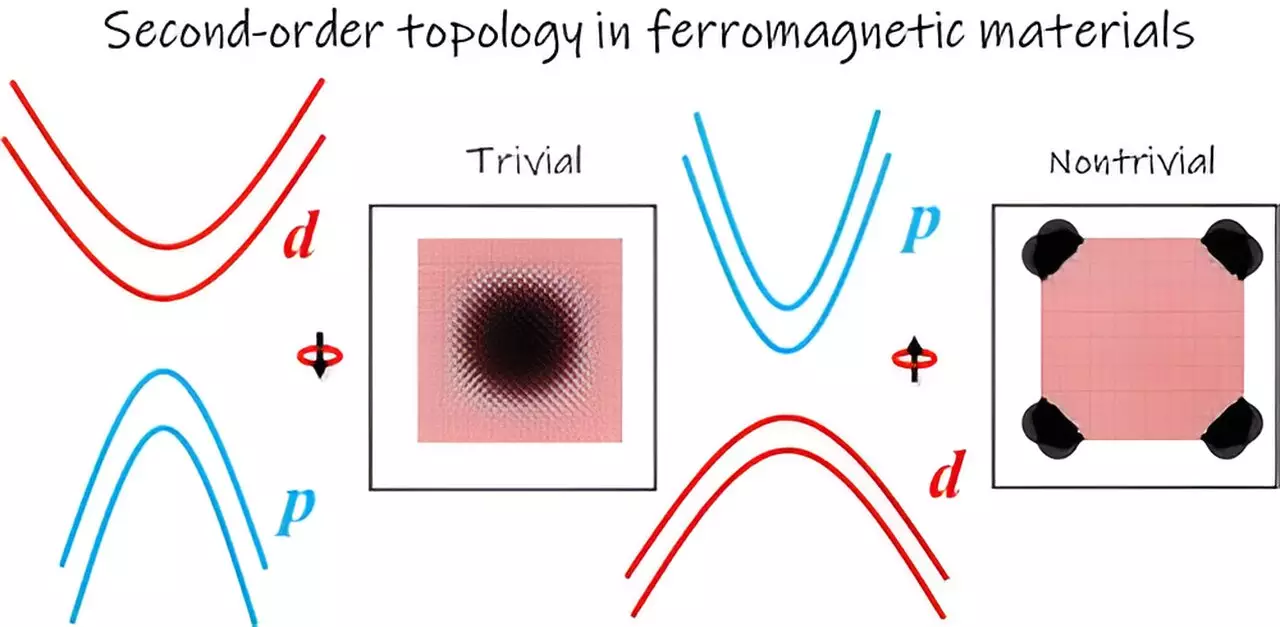Spintronics, short for spin transport electronics, is poised to revolutionize the landscape of modern electronics. By leveraging the intrinsic spin of electrons, rather than merely their charge, researchers aim to create devices that are faster and more efficient. This emerging field holds tremendous potential in data storage, processing, and quantum computing, but its success hinges upon the discovery and refinement of new materials capable of supporting these spin phenomena.
Understanding Topological Insulators
At the heart of this exploration are topological insulators, materials that showcase a fascinating contradiction: while they act as insulators in their interior, they allow conduction at their boundaries. This unique characteristic stems from the presence of surface states that are robust against disorder and impurities. Three-dimensional topological insulators, like Bi2Se3, are well-studied, exhibiting two-dimensional Dirac fermions on their surfaces. However, the recent introduction of second-order topological insulators has broadened the horizon of material science. These new constructs present (m-2)-dimensional boundary states, such as hinge and corner states, fascinating concepts that extend the existing topological framework.
Central to this discussion are two-dimensional ferromagnetic semiconductors, such as CrI3, Cr2Ge2Te6, and VI3, recognized for their significant role in spintronics. These materials are characterized by strong electron-electron correlations, typically leading to a landscape where adjacent atoms have limited communication. This electron interaction challenge has essentially modeled these semiconductors into atomic insulators, complicating the search for enhancing their topological properties.
Recent research led by Dr. Zhao Liu and Professor Nikhil Medhekar at Monash University’s FLEET Center has embarked on an innovative pathway, revealing a systematic approach towards intrinsic magnetic second-order topological insulators. Their study uncovers a phenomenon where the p orbitals of ligand anions and the d orbitals of metal cations can develop an “inverted orbital order.” This contrasts with traditional ferromagnetic semiconductors, where p orbitals remain energetically subordinate to d orbitals.
In inverted systems, the energy dynamics shift, leading to situations where p orbitals exceed their d orbital counterparts. This transition presents an opportunity for a fundamental shift in the material’s electronic properties, thereby facilitating the confinement of magnetically ordered states at the material’s boundaries, which is crucial for spintronic applications.
The breakthrough analysis reveals promising candidates such as 1T-VS2 and CrAs monolayers as intrinsic magnetic second-order topological insulators. In these materials, the spin-up channels exhibit inverted p-d orbital configurations—resulting in nontrivial topological states—while the spin-down channels maintain traditional order with trivial topology. Notably, the distinct lattice structures of these materials, hexagonal for 1T-VS2 and square for CrAs, could pave the way for the integration of these findings into device engineering.
Detecting these intricate states can be accomplished through the utilization of spin-polarized scanning tunneling microscopy, which allows researchers to visualize the localized corner states—an essential aspect of verifying the existence of topological phases.
The Broader Implications of this Research
The implications of Liu and Medhekar’s research extend beyond mere academic curiosity. Their findings not only bring a deeper understanding of intrinsic magnetic second-order topological insulators but also position these materials as potential breakthroughs in the field of Kondo insulators. By suggesting that similar p and f orbital dynamics could lead to new classifications of Kondo insulators, the study encourages broader explorations into the interplay of electronic states and topological properties.
The work conducted by the team at Monash University signifies a crucial step towards harnessing the complex interactions within intrinsic magnetic second-order topological insulators. As our understanding of these materials deepens, the future of spintronics appears increasingly bright, with the potential for practical applications that promise to advance computing technology. The journey of discovering new states of matter continues, and the anticipation surrounding these developments remains palpable in the scientific community.


Leave a Reply